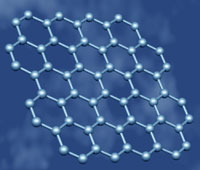 O Prof. Yakov Kopelevich, da Universidade Estadual de Campinas (UNICAMP), Brasil, é o orador convidado de um seminário promovido pelo Departamento de Física, esta quinta-feira, dia 10, com o tema «Graphite and graphene: scientific background». O evento decorre no Anfiteatro Prof. Manuel Fernandes Thomaz do Departamento de Física, a partir das 15h00, estando aberto à participação de toda a comunidade.
O Prof. Yakov Kopelevich, da Universidade Estadual de Campinas (UNICAMP), Brasil, é o orador convidado de um seminário promovido pelo Departamento de Física, esta quinta-feira, dia 10, com o tema «Graphite and graphene: scientific background». O evento decorre no Anfiteatro Prof. Manuel Fernandes Thomaz do Departamento de Física, a partir das 15h00, estando aberto à participação de toda a comunidade.
ABSTRAC: Remarkable electronic properties of graphite and graphene (single layers of carbon from which graphite is built) are related to the unusual conic-like electronic spectrum of quasiparticles, known as Dirac fermions. A large number of experiments showed that Dirac quasiparticles in graphite occupy an unexpectedly large phase volume, inconsistent with three-dimensional theoretical models, indicating that the high-quality graphite contains nearly decoupled graphene layers. One consequence of the Dirac spectrum is that the quantum effects can be observable in graphite even at room temperature and at low applied magnetic fields (B < 1 T). This is possible because of the exceptionally high mobility of electrons (holes) in graphite (106 - 107 cm2/Vs). In fact, the quality of graphene layers in graphite is much higher as compared to separated (extracted) graphene. Based on experimental observations, we anticipate that thin graphite samples and not single layers will be the most promising candidates for graphene-based electronics.
Informações sobre o orador podem ser consultadas aqui.
Fonte: Universidade de Aveiro (PT)



